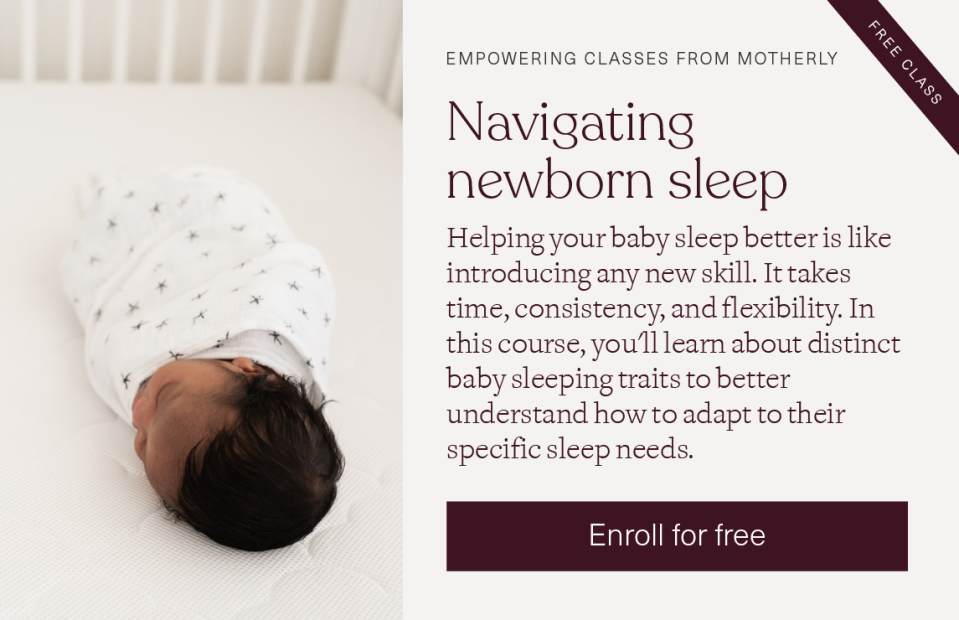Can wake windows help your baby sleep better?
For as long as we’ve been having babies, we’ve been trying to figure out how to help them sleep better. In my 30 years as a pediatrician, I saw parents try every trick in the book to get a little more shuteye. While some of these approaches definitely delivered Zzzs (like snug wrapping with easy-to-use swaddles, playing low, rumbly sound all night, and using the 5 S’s or SNOO to create a womb-like environment), others ended up being a passing fad. And recently, “wake windows” have entered the chat. So, what are wake windows… and can they really help your little one sleep? Here’s what you need to know.
What are wake windows?
Simply put, a “wake window” is how long a baby typically stays awake (a “window” in between sleep periods). A window opens when your little one opens their eyes after a nice snooze and closes the next time they gently shut as sleep begins again. For example, if your baby wakes up from a nap at 2pm and falls asleep again at 4pm, that’s a 2-hour wake window. And if your peanut consistently stays awake for 2 hours in that early afternoon period, that becomes a predictable pattern you can use to build a rough sleep-wake routine.
Parents are advised to pay attention to wake windows to notice patterns and to help them anticipate when to put the baby to sleep…before they’re so overtired that they get cranky. While some parents think that letting their baby get overtired will lead to a good long sleep, it usually backfires. Overtired infants often get so fussy that they actually resist sleep.
Paying attention to your baby’s schedule can also help you structure your days and give a little bit of organization to the daily chaos! It can take a while for babies to settle into a schedule of a certain number of naps a day at a specific time. But if you know your baby can reliably hang for, say, 2 hours, you know that, after their morning nap, you probably have time to feed them and run to the pharmacy or grab a quick coffee with a mom friend before your bub needs to rest their sweet head back in bed.
Can wake windows help my baby sleep better?
Parents tend to wait for blank stares, eye rubbing and big yawns to let them know their little one is ready to drift off to Dreamland. The problem is, once your bub shows those sleepytime signals, you’ve already breezed past their snoozy sweet spot and they’re on the verge of being overtired. That’s why wake windows give parents a way to anticipate tiredness and get their babies to bed before a battle begins.
Wake windows by age
Though every baby’s sleep needs are going to be a little different, here’s a pretty good guide to how long babies usually stay awake during the day (by age):
0-1 month: 45-60 minutes
1-2 months: 1-2 hours
3-4 months: 1.25-2.5 hours
5-7 months: 2-4 hours
8-10 months: 2.5-4.5 hours
11-14 months: 3-5 hours
15-24 months: 4-6 hours
Dr. Harvey Karp’s 4 tips for using wake windows
1. Know your baby’s sleepytime signs
To learn your baby’s wake windows, you need to recognize when they’re naturally ready to nod off. The goal is to put your baby down before they get overtired.
You can use the above wake windows as a rough guide, but the key is watching your baby as well as the clock! When you see signs of drowsiness—such as reduced activity, yawning, staring, blinking, and/or eye-rubbing—the truth is, you’re probably already a little past your baby’s wake window. That’s OK! Now you know that before the next sleep session you’ll want to put your baby a little earlier.
For example, if your 3-month-old started yawning and rubbing their eyes at the 75-minute mark, next time try putting them down around 60 minutes.
2. Use the 5 S’s
Tuning into your baby’s unique rhythms can help you solve the when of baby sleep. But when it comes to the how to get your baby to sleep, the 5 S’s for soothing babies are going to be one of the most important tools you have. The 5 S’s help recreate a womb-like environment (aka a baby’s very favorite sleep space) with snug swaddling, shushing (white noise), swinging, being held in the side/stomach position (but ONLY put to bed on the back), and sucking. I designed SNOO Smart Sleeper to use three of those 5 S’s (swaddling, shushing, swinging), so it’s no wonder SNOO usually adds an hour of sleep a night… or sometimes more!
3. Keep a sleep log
New parents have about a million things on their minds… so it can be easy to forget whether your baby opened their little eyes at 7 a.m. or 7:30 a.m. To keep tabs on wake windows, consider jotting down the times or using a tracking app. (Pro tip: SNOO has a connected app that automatically logs each of your SNOO sessions for you. That makes it super easy to see your baby’s sleep and wake times at a glance.)
4. Be flexible
I’ve always said that if I were to make a bumper sticker for parents, it would say “Be flexible… or die!” Although it’s great to have plans and routines, our little ones are here to challenge all those expectations—especially when it comes to sleep. Parents need to be willing to pivot when necessary.
That means maybe your bub’s wake windows won’t look the same as other babies their age… or even the same as their own wake windows last week. As much as possible, try to go with the flow. You’ve got this.


